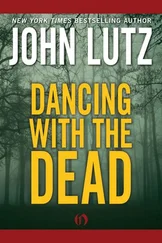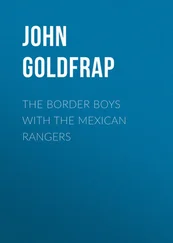John Wohlstetter - Sleepwalking with the Bomb
Здесь есть возможность читать онлайн «John Wohlstetter - Sleepwalking with the Bomb» весь текст электронной книги совершенно бесплатно (целиком полную версию без сокращений). В некоторых случаях можно слушать аудио, скачать через торрент в формате fb2 и присутствует краткое содержание. Город: Seattle, Год выпуска: 2012, ISBN: 2012, Издательство: Discovery Institute Press, Жанр: История, military, Политика, Публицистика, на английском языке. Описание произведения, (предисловие) а так же отзывы посетителей доступны на портале библиотеки ЛибКат.
- Название:Sleepwalking with the Bomb
- Автор:
- Издательство:Discovery Institute Press
- Жанр:
- Год:2012
- Город:Seattle
- ISBN:978-1-93659-906-6
- Рейтинг книги:3 / 5. Голосов: 1
-
Избранное:Добавить в избранное
- Отзывы:
-
Ваша оценка:
- 60
- 1
- 2
- 3
- 4
- 5
Sleepwalking with the Bomb: краткое содержание, описание и аннотация
Предлагаем к чтению аннотацию, описание, краткое содержание или предисловие (зависит от того, что написал сам автор книги «Sleepwalking with the Bomb»). Если вы не нашли необходимую информацию о книге — напишите в комментариях, мы постараемся отыскать её.
RICHARD PERLE, Resident Fellow, American Enterprise Institute and Assistant Secretary of Defense, 1981–1987 Sleepwalking with the Bomb
Sleepwalking with the Bomb — читать онлайн бесплатно полную книгу (весь текст) целиком
Ниже представлен текст книги, разбитый по страницам. Система сохранения места последней прочитанной страницы, позволяет с удобством читать онлайн бесплатно книгу «Sleepwalking with the Bomb», без необходимости каждый раз заново искать на чём Вы остановились. Поставьте закладку, и сможете в любой момент перейти на страницу, на которой закончили чтение.
Интервал:
Закладка:
The Bomb Goes Underground
AN EXPLOSION the Soviets conducted on Christmas Day 1962 marked the last superpower atmospheric test. July 1963 was the “hottest” radioactive month in U.S. history, as debris continued to fall from the atmosphere. On August 5 the U.S., USSR, and UK signed the Limited Test Ban Treaty, which ended atmospheric, surface, and underwater tests. [48] Paul Nitze points out that the Soviets gathered more detailed information than did the U.S. on atmospheric tests and by signing the treaty locked in a knowledge edge.
The U.S. Senate ratified it later that year.
A decade later, in July 1974, President Nixon signed two treaties—the Threshold Test Ban Treaty and the Peaceful Nuclear Explosives Treaty (which dealt with excavation)—limiting underground nuclear explosions to 150 kilotons (roughly 10 times the Hiroshima bomb’s yield). The yield limitation was important. Scientists found that in principle, the potential yield of the H-bomb is without limit.
The disarmament movement’s revival began with another success, but this time, it was Western activists collaborating with the Soviets to undermine support for deployment of the neutron bomb, as noted in chapter 4. The Soviets concocted a brilliant propaganda campaign, labeling the neutron weapon “the capitalist bomb” because it killed people while preserving property. The claim was laughable, as property within range of the lethal dose of neutron radiation would be contaminated for years, and thus rendered unusable. West German Chancellor Helmut Schmidt staked his prestige on neutron deployment, only to see President Jimmy Carter unilaterally cancel the weapon. For the Soviets it was a twofer: getting an effective battlefield weapon cancelled and creating a fissure within the NATO alliance.
During the 1980s the movement was considerably less successful than it had previously been. Activists hampered but did not prevent NATO’s efforts to counter Moscow’s aggressive deployment of nuclear missiles in Europe. They pressed for a nuclear freeze, which would in actual practice have been utterly unenforceable against Moscow, while enforced against the West by public opinion. Key hardcore activists were working hand in glove with “peace groups” like the World Peace Council, which the Soviet Union created to hinder Western nuclear programs. The vast majority of freeze supporters among the general public had no inkling of the shadowy connections between phony peace groups and the Soviet KGB (secret police), but Western intelligence agencies knew.
A nuclear freeze also would have eliminated Moscow’s fear that it could not keep up with emerging American nuclear strategic developments. It was narrowly defeated by the steely resolve of Western leaders, above all Ronald Reagan and Margaret Thatcher, who surely understood that once a freeze is signed, it for practical purposes binds Western nations far more firmly than their adversaries.
In 1983 a highly touted film about nuclear war between the U.S. and USSR, The Day After , was shown on ABC. The film was clearly aimed at pushing public sentiment towards abolition of nuclear weapons. It presented a scenario in which a crisis ensues when the Soviets blockade Berlin. The U.S. sends forces to re-open the city, and a shooting war begins. NATO forces use tactical nuclear weapons first, and Moscow responds. Then one of the sides—which is left unclear—escalates to use of strategic weapons against cities. Shortly thereafter an all-out nuclear exchange results, with countless millions killed on each side, plus vast physical devastation.
The Reagan administration feared that the movie’s graphic depictions of the horrific devastation and loss of life caused by a nuclear exchange would stampede public opinion. It requested airtime after the movie to respond to it, and ABC assented. Secretary of State George Shultz appeared, and declared nuclear war “unacceptable.” The movie did not noticeably shift public attitudes.
The Cold War triumvirate of Ronald Reagan, Margaret Thatcher, and West German chancellor Helmut Kohl held the line against the nuclear freeze movement, a critical psychological factor in preserving the Western alliance and convincing the Soviet Union that the West would not crumble from within. Earlier, however, disarmament movements had driven government policy—for the better with the ban on above ground and underwater tests, but for the worse with NATO’s unilateral scrapping of the neutron bomb.
How popular pressure will weigh in the new push for nuclear abolition remains to be seen, but whatever happens will confirm the Ninth Lesson of nuclear-age history: Popular pressure for unilateral disarmament can prevail unless Western governments explain its hidden, grave dangers. One major step is pending: the Comprehensive Nuclear Test Ban Treaty, to ban all nuclear weapon testing. [49] Through January 2012, 182 countries had signed and 156 had ratified the treaty. It will enter into force once 44 nuclear-energy countries that helped negotiate have ratified it. Eight countries remain on this list: China, Egypt, India, Iran, Israel, North Korea, Pakistan, and the U.S. The U.S. has signed, but not ratified, the treaty.
The challenge skeptical governments must meet is to educate their publics about the risks of precipitous disarmament, which could lead to, rather than prevent, nuclear blackmail.
12.
DISARMAMENT II: SOME DISARM, OTHERS MUST BE DISARMED
You don’t want a messianic apocalyptic cult controlling atomic bombs. When the wide-eyed believer gets hold of the reins of power and the weapons of mass death, then the entire world should start worrying, and that is what is happening in Iran.
ISRAELI PRIME MINISTER BINYAMIN NETANYAHU TO JEFFREY GOLDBERG, THE ATLANTIC , MARCH 2009COUNTRIES DISARM FOR THE SAME REASON THAT THEY ORIGINALLY arm: because they judge it to be in their supreme national interest. They do not disarm because America or anyone else is “setting an example.” Nor do they do so because they wish to earn the goodwill of the (largely fictive) “international community,” unless the step is tied to a specific benefit such as the lifting of economic and political sanctions (South Africa), or winning political autonomy (former Soviet republics).
About hostile nations in particular—rogues like North Korea and revolutionaries like Iran—we can say that they do not disarm if they think they can get away with not doing so. Given sufficient national security reason to retain a clandestine cache of nuclear weapons, they will retain it, even if other nations are reducing. For them, some combination of sanctions, credible threats, or military action is necessary to derail their programs. Thus the Tenth Lesson of nuclear-age history: Disarming hostile powers cannot be done by negotiations alone.
This lesson has been behind various efforts to disarm recalcitrant nascent nuclear powers by force, before they produce weapons. These efforts include Israel’s 1981 raid on Iraq’s Osirak reactor, its 2007 raid on a partially finished Syrian nuclear reactor, and the allied coalition’s 2003 decision to invade Iraq and end any possibility of Saddam Hussein becoming head of a nuclear state. America and Israel have contemplated a preemptive strike against Iran’s nuclear facilities, to prevent or at least delay Iran’s ability to produce nuclear weapons.
In considering a variety of cases of disarmament, this chapter makes clear that when leaders deem it in their country’s best interest to disarm, they will do so. But hostile powers must be disarmed by force.
Latin America
BROAD-SCALE DISARMAMENT efforts first bore fruit in Latin America. Brazil floated the first proposal for a Latin American nuclear-free zone in 1962—even before the Cuban Missile Crisis brought nuclear missiles to America’s neighbor. Just five years later, in 1967, five Latin American countries—Bolivia, Brazil, Chile, Ecuador, and Mexico—signed the Treaty for the Prohibition of Nuclear Weapons in Latin America (known as the Treaty of Tlatelolco, after the part of Mexico City where the signing ceremony happened). The treaty came into force just over a year later, and by 2002 all 33 Latin American countries had signed and ratified it. [50] Two other notable nuclear-free-zone treaties are the Treaty of Rarotonga covering the South Pacific, which came into force in 1986; and the African Nuclear-Free Weapon Zone Treaty, which came into force in 2009.
Интервал:
Закладка:
Похожие книги на «Sleepwalking with the Bomb»
Представляем Вашему вниманию похожие книги на «Sleepwalking with the Bomb» списком для выбора. Мы отобрали схожую по названию и смыслу литературу в надежде предоставить читателям больше вариантов отыскать новые, интересные, ещё непрочитанные произведения.
Обсуждение, отзывы о книге «Sleepwalking with the Bomb» и просто собственные мнения читателей. Оставьте ваши комментарии, напишите, что Вы думаете о произведении, его смысле или главных героях. Укажите что конкретно понравилось, а что нет, и почему Вы так считаете.












